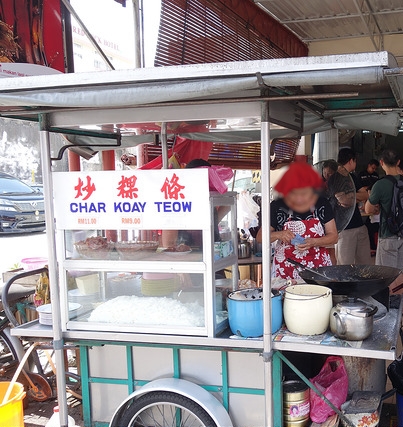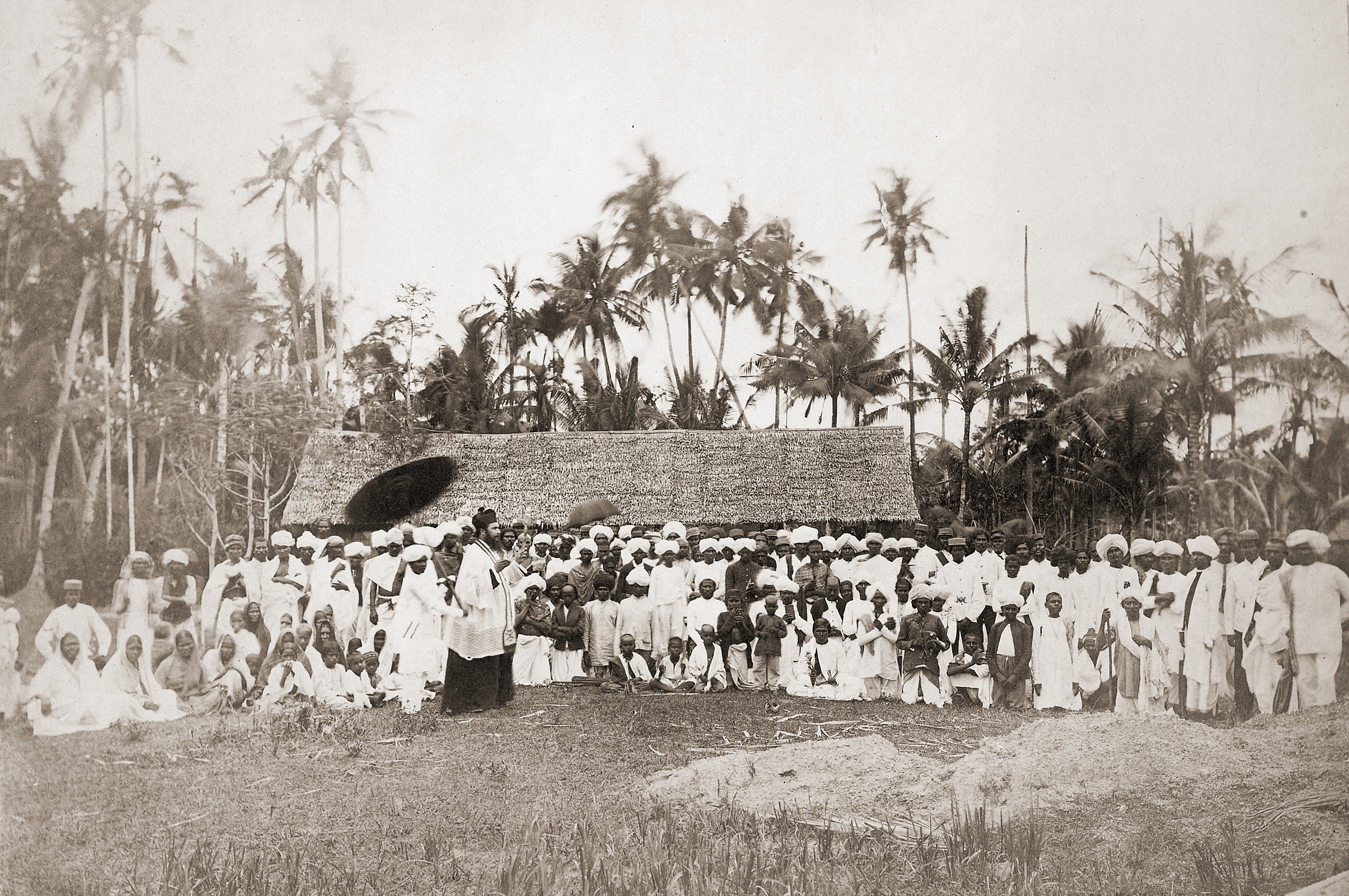|
Penang Hokkien
Penang Hokkien (; Tâi-lô: ''Pin-siânn Hok-kiàn-uā''; ; ) is a local variant of Hokkien spoken in Penang, Malaysia. It is spoken as a mother tongue by 63.9% of Penang's Chinese community, and also by some Penangite Indians and Penangite Malays as a third language spoken by these two other ethnic groups. It was once the ''lingua franca'' among the majority Chinese population in Penang, Kedah, Perlis and northern Perak. However, since the 1980s, many young speakers have shifted towards Malaysian Mandarin, under the Speak Mandarin Campaign in Chinese-medium schools in Malaysia, even though Mandarin was not previously spoken in these regions. Mandarin has been adopted as the only language of instruction in Chinese schools and, from the 1980s to mid-2010s, the schools had rules to penalize students and teachers for using non-Mandarin varieties of Chinese. Penang Hokkien is a subdialect of Zhangzhou (漳州; ''Tsiang-tsiu'') Chinese, with widespread use of Malay and Englis ... [...More Info...] [...Related Items...] OR: [Wikipedia] [Google] [Baidu] |
Chinese Characters
Chinese characters () are logograms developed for the writing of Chinese. In addition, they have been adapted to write other East Asian languages, and remain a key component of the Japanese writing system where they are known as ''kanji''. Chinese characters in South Korea, which are known as ''hanja'', retain significant use in Korean academia to study its documents, history, literature and records. Vietnam once used the '' chữ Hán'' and developed chữ Nôm to write Vietnamese before turning to a romanized alphabet. Chinese characters are the oldest continuously used system of writing in the world. By virtue of their widespread current use throughout East Asia and Southeast Asia, as well as their profound historic use throughout the Sinosphere, Chinese characters are among the most widely adopted writing systems in the world by number of users. The total number of Chinese characters ever to appear in a dictionary is in the tens of thousands, though most are graphic ... [...More Info...] [...Related Items...] OR: [Wikipedia] [Google] [Baidu] |
Malaysian Mandarin
Malaysian Mandarin () is a variety of Mandarin Chinese spoken in Malaysia by ethnic Chinese in Malaysia. Today, Malaysian Mandarin is the ''lingua franca'' of the Malaysian Chinese community. Malaysian Mandarin speakers seldom translate local terms or names to Mandarin when they speak. They would prefer to verbally use Malay place names in their original Malay pronunciation: for instance, even though the street name "Jalan Bukit Kepong" is written as "" (, literally "Bukit Kepong Road") in local Chinese printed media, the local Chinese almost never use in daily conversations. There are exceptions, for example Taiping, since this name is derived from the Chinese language, when people mention this place when speaking local Mandarin, they always use its Mandarin pronunciation, "", instead of using its Malay pronunciation, which is closer to "Taipeng". Another example is when a place's Chinese translation varied vastly with its native Malay name, for example: for Teluk Inta ... [...More Info...] [...Related Items...] OR: [Wikipedia] [Google] [Baidu] |
Language Shift
Language shift, also known as language transfer or language replacement or language assimilation, is the process whereby a speech community shifts to a different language, usually over an extended period of time. Often, languages that are perceived to be higher status stabilise or spread at the expense of other languages that are perceived by their own speakers to be lower-status. An example is the shift from Gaulish to Latin during the time of the Roman Empire. Mechanisms Prehistory For prehistory, Forster et al. (2004) and Forster and Renfrew (2011) observe that there is a correlation of language shift with intrusive male Y chromosomes but not necessarily with intrusive female mtDNA. They conclude that technological innovation (the transition from hunting-gathering to farming, or from stone to metal tools) or military prowess (as in the abduction of British women by Vikings to Iceland) causes immigration of at least some men, who are perceived to be of higher status than loca ... [...More Info...] [...Related Items...] OR: [Wikipedia] [Google] [Baidu] |
Lingua Franca
A lingua franca (; ; for plurals see ), also known as a bridge language, common language, trade language, auxiliary language, vehicular language, or link language, is a language systematically used to make communication possible between groups of people who do not share a native language or dialect, particularly when it is a third language that is distinct from both of the speakers' native languages. Lingua francas have developed around the world throughout human history, sometimes for commercial reasons (so-called "trade languages" facilitated trade), but also for cultural, religious, diplomatic and administrative convenience, and as a means of exchanging information between scientists and other scholars of different nationalities. The term is taken from the medieval Mediterranean Lingua Franca, a Romance-based pidgin language used especially by traders in the Mediterranean Basin from the 11th to the 19th centuries. A world language – a language spoken internationally and by ... [...More Info...] [...Related Items...] OR: [Wikipedia] [Google] [Baidu] |
Kedahan Malay People
Kedahan Malays (Malay: ''Melayu Kedah'', Jawi: ملايو ﻗﺪﺡ) or commonly known as Orang Utara ('Northerners'), is a sub-group of Malays who are native to northern Malaysia (in the states Kedah, Penang and Perlis as well northernmost parts of Perak) and in southernmost parts of Thailand (in the provinces of Phuket, Trang and Satun) and Burma (in Mergui Archipelago). They are among the earliest settlers in the Malay peninsula. Kedahan Malays comprised at least 15% of the total Malaysian Malay population and constitute over 75% of the Kedah state population, thus making them the largest ethnic group in the state of Kedah. History According to history, Kedah was very popular among Arabian traders. Thus, this has led to interracial marriages between Arabs and Malays. Due to Arabic influences in the Kedahan Malay language, some Kedahan Malay are of Arab descent. However some of the Kedahan Malays that resided on the island-state of Penang might have Indian and/or Chinese bl ... [...More Info...] [...Related Items...] OR: [Wikipedia] [Google] [Baidu] |
Malaysians Of Indian Descent In Penang
Penangite Indians ( ta, பினாங்கு இந்தியர்கள்; ms, Kaum India di Pulau Pinang), also known as Chulias, are Malaysian Indians that live primarily in the state of Penang, Malaysia. Most are the descendants from those who migrated from India during the British colonisation of Malaya. However, historical sources prove that the ancient Indians arrived in Penang during the Chola dynasty. Penangite Indians forms a large percentage of the state's professional community such as business, law and medicine as well as politics, it can be proven by the appointment of Dr. P. Ramasamy as deputy chief minister of Penang. It made him the first Malaysian of Indian origin to hold the post of deputy chief minister in any state of Malaysia. In addition, first Tamil Vernacular School in Malaysia was established in Penang. History Already in the 1790s, Light mentions Chulias (that is, people from the Coromandel Coast of India) as shopkeepers and farm labourers ... [...More Info...] [...Related Items...] OR: [Wikipedia] [Google] [Baidu] |
Penangite Chinese
Penangite Chinese are ethnic Chinese Malaysians of full or partial Chinese ancestry who either hail from or live within the State of Penang. , nearly 42% of Penang's population belonged to the Chinese ethnic group, making ethnic Chinese the largest ethnic community within the state. Most Chinese Penangites are the descendants of Chinese colonists, traders, accountants, merchants, labourers and immigrants from southern China who moved to the Penang between the 18th and 20th centuries. By the mid-19th century, George Town, the capital city of Penang, was home to a significant Peranakan community, also known as the ''King's Chinese'' due to their loyalty to the British crown. Under British colonial rule, Penang continued to experience increasing Chinese immigration throughout the 19th century. As the largest group of Penangite Chinese are ethnic Hokkiens (38% of the Chinese penangite population in 1957) who came from southern Fujian Province, home to the Hokkien language, Penang H ... [...More Info...] [...Related Items...] OR: [Wikipedia] [Google] [Baidu] |
Hokkien
The Hokkien () variety of Chinese is a Southern Min language native to and originating from the Minnan region, where it is widely spoken in the south-eastern part of Fujian in southeastern mainland China. It is one of the national languages in Taiwan, and it is also widely spoken within the Chinese diaspora in Singapore, Indonesia, Malaysia, the Philippines and other parts of Southeast Asia; and by other overseas Chinese beyond Asia and all over the world. The Hokkien 'dialects' are not all mutually intelligible, but they are held together by ethnolinguistic identity. Taiwanese Hokkien is, however, mutually intelligible with the 2 to 3 million speakers in Xiamen and Singapore. In Southeast Asia, Hokkien historically served as the '' lingua franca'' amongst overseas Chinese communities of all dialects and subgroups, and it remains today as the most spoken variety of Chinese in the region, including in Singapore, Malaysia, Indonesia, Philippines and some parts of Indochina (part ... [...More Info...] [...Related Items...] OR: [Wikipedia] [Google] [Baidu] |
Amoy Dialect
The Amoy dialect or Xiamen dialect (), also known as Amoynese, Amoy Hokkien, Xiamenese or Xiamen Hokkien, is a dialect of Hokkien spoken in the city of Xiamen (historically known as "Amoy") and its surrounding metropolitan area, in the southern part of Fujian province. Currently, it is one of the most widely researched and studied varieties of Southern Min. It has historically come to be one of the more standardized varieties. Amoynese and Taiwanese are both historically mixtures of Quanzhou and Zhangzhou dialects. As such, they are very closely aligned phonologically. There are some differences between the two, especially lexical, as a result of physical separation and the differing histories of mainland China and Taiwan during the 20th century. Amoynese and Taiwanese are mutually intelligible. Intelligibility with other Hokkien, especially inland, is more difficult. By that standard, Amoynese and Taiwanese may be considered dialects of a single language. Ethnolinguisticall ... [...More Info...] [...Related Items...] OR: [Wikipedia] [Google] [Baidu] |
Taiwanese Hokkien
Taiwanese Hokkien () (; Tâi-lô: ''Tâi-uân-uē''), also known as Taigi/Taigu (; Pe̍h-ōe-jī/Tâi-lô: ''Tâi-gí / Tâi-gú''), Taiwanese, Taiwanese Minnan, Hoklo and Holo, is a variety of the Hokkien language spoken natively by about 70%+ of the population of Taiwan. It is spoken by a significant portion of Taiwanese people descended from immigrants of southern Fujian during the Qing dynasty. It is one of the national languages of Taiwan. Taiwanese is generally similar to spoken Amoy dialect, Amoy Hokkien, Quanzhou dialect, Quanzhou Hokkien, and Zhangzhou dialect, Zhangzhou Hokkien, as well as their dialectal forms used in Southeast Asia, such as Singaporean Hokkien, Penang Hokkien, Philippine Hokkien, Medan Hokkien, & Southern Peninsular Malaysian Hokkien. It is Mutual intelligibility, mutually intelligible with Amoy dialect, Amoy Hokkien and Zhangzhou dialects, Zhangzhou Hokkien at the mouth of the Jiulong River (九龍) immediately to the west in mainland China and wit ... [...More Info...] [...Related Items...] OR: [Wikipedia] [Google] [Baidu] |



.jpg)

.png)